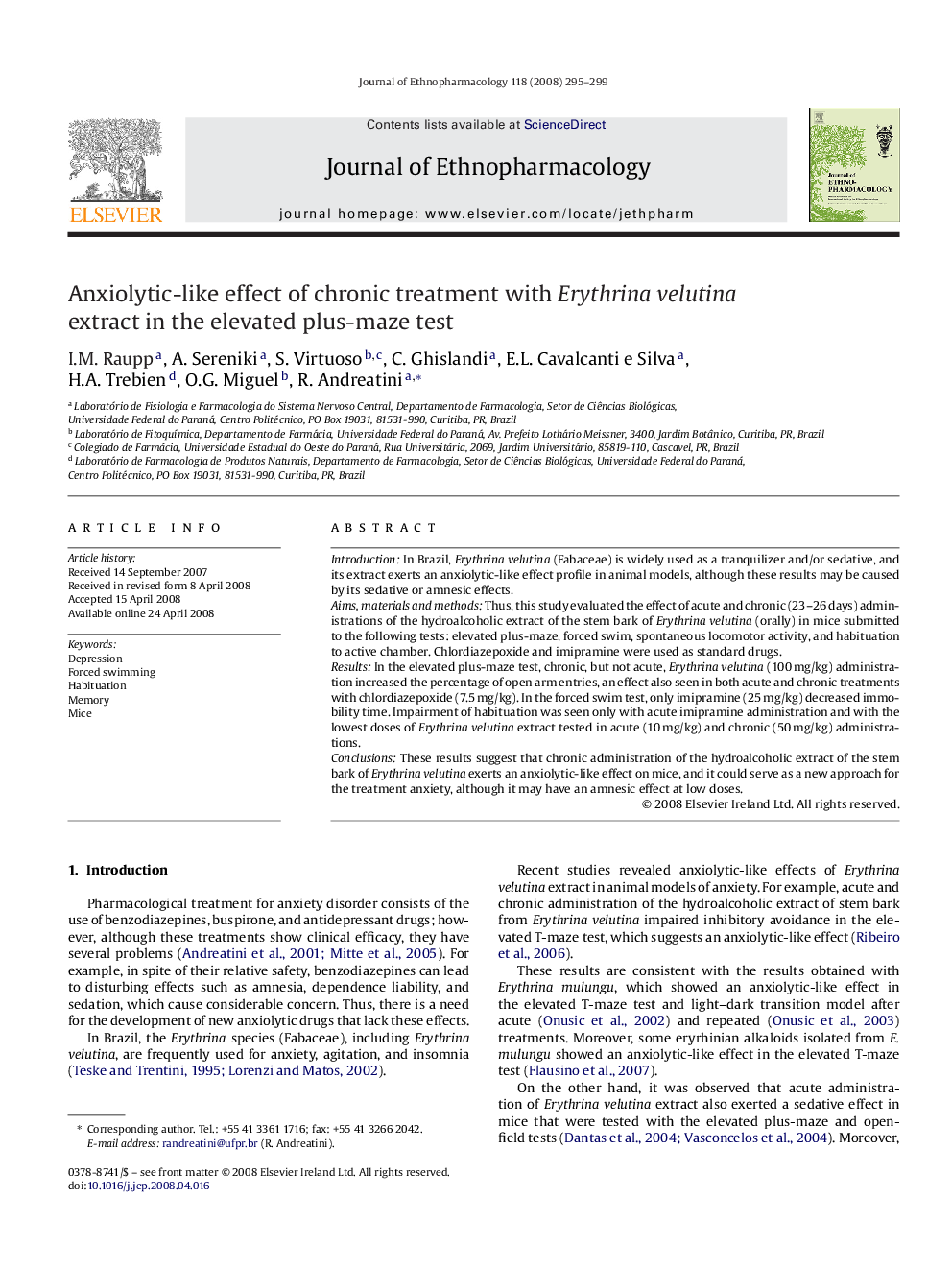| کد مقاله | کد نشریه | سال انتشار | مقاله انگلیسی | نسخه تمام متن |
|---|---|---|---|---|
| 2546955 | 1124041 | 2008 | 5 صفحه PDF | دانلود رایگان |

IntroductionIn Brazil, Erythrina velutina (Fabaceae) is widely used as a tranquilizer and/or sedative, and its extract exerts an anxiolytic-like effect profile in animal models, although these results may be caused by its sedative or amnesic effects.Aims, materials and methodsThus, this study evaluated the effect of acute and chronic (23–26 days) administrations of the hydroalcoholic extract of the stem bark of Erythrina velutina (orally) in mice submitted to the following tests: elevated plus-maze, forced swim, spontaneous locomotor activity, and habituation to active chamber. Chlordiazepoxide and imipramine were used as standard drugs.ResultsIn the elevated plus-maze test, chronic, but not acute, Erythrina velutina (100 mg/kg) administration increased the percentage of open arm entries, an effect also seen in both acute and chronic treatments with chlordiazepoxide (7.5 mg/kg). In the forced swim test, only imipramine (25 mg/kg) decreased immobility time. Impairment of habituation was seen only with acute imipramine administration and with the lowest doses of Erythrina velutina extract tested in acute (10 mg/kg) and chronic (50 mg/kg) administrations.ConclusionsThese results suggest that chronic administration of the hydroalcoholic extract of the stem bark of Erythrina velutina exerts an anxiolytic-like effect on mice, and it could serve as a new approach for the treatment anxiety, although it may have an amnesic effect at low doses.
Journal: Journal of Ethnopharmacology - Volume 118, Issue 2, 23 July 2008, Pages 295–299